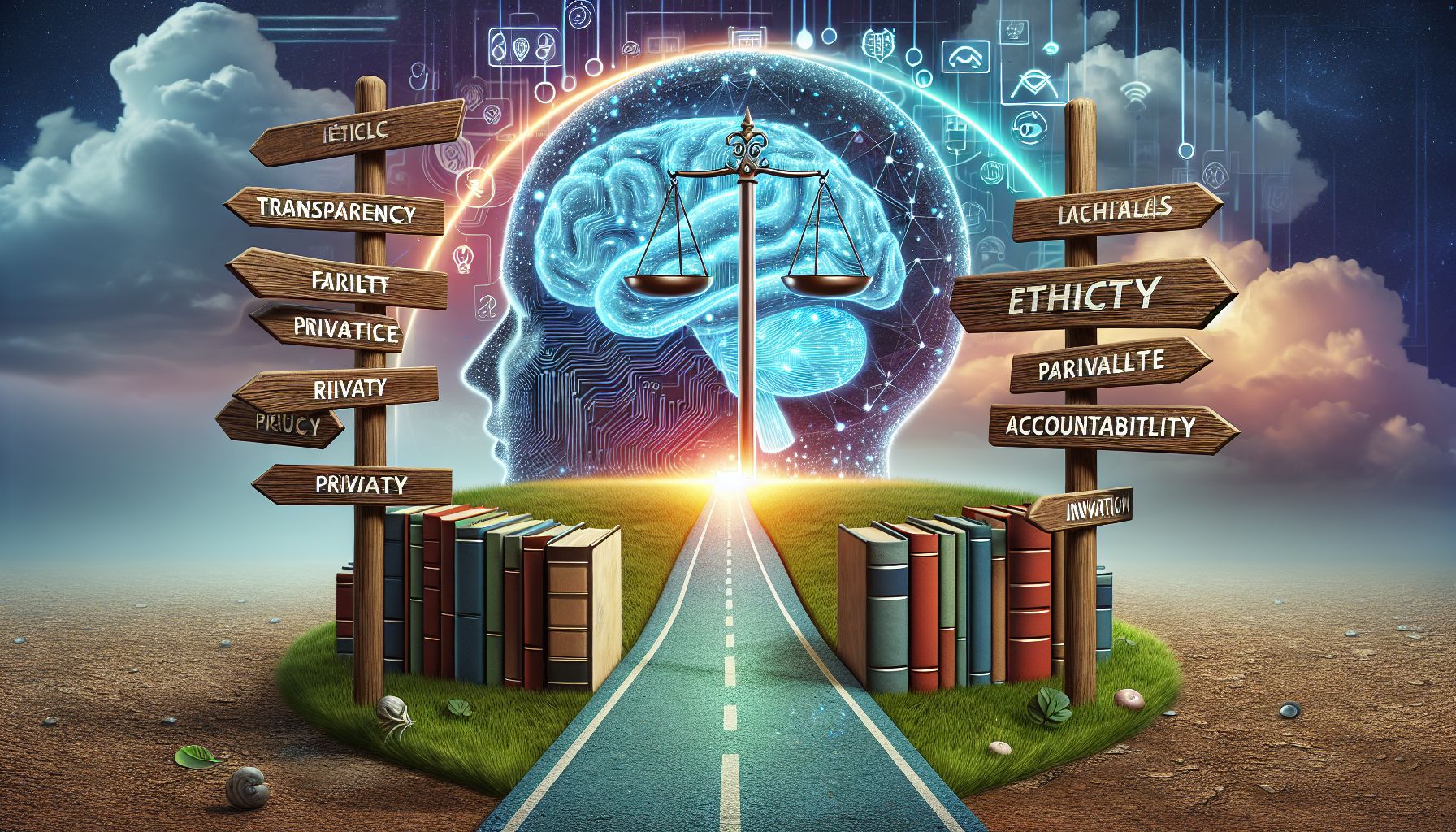📌 Let’s explore the topic in depth and see what insights we can uncover.
⚡ “Can a machine have a conscience? Dive into the fascinating, complex world of ethical AI and explore how we might teach our robots right from wrong.”
In a rapidly evolving digital world, artificial intelligence (AI) has emerged as a significant thread in the complex tapestry of technological innovation. However, as AI continues to permeate various sectors, crucial questions arise about ethics, responsibility, and regulation. This blog post serves as a reflective exploration of these crucial aspects, shedding light on the intriguing world of AI while underscoring the importance of ethical AI use, effective regulation, and responsible innovation.
The Spectrum of AI: A Balancing Act

Charting the Compassionate Course for AI Innovation
AI, like electricity or the internet, is a general-purpose technology. It has the potential to revolutionize industries from healthcare to transportation, from education to entertainment. However, AI’s transformative powers aren’t all rosy. They come with a spectrum of ethical considerations that must be carefully balanced. Imagine walking on a tightrope. On one side, you have the limitless potential that AI promises. On the other, there’s the precipice of unethical AI use that could lead to societal harm. The key to safely navigate this tightrope lies in the harness of ethical AI use and effective regulations.
Unpacking Ethical AI Use
Ethical AI use is a multifaceted concept, with roots in accountability, transparency, and fairness. Here’s a closer look at these core components:
Accountability
At its core, accountability in AI means that the creators and users of AI systems should be held responsible for the outcomes these systems produce. For instance, if an AI-powered autonomous vehicle causes a traffic accident, who should be held accountable? The car manufacturer? The software engineer? The vehicle owner? 🧩 As for These, they’re questions that we, as a society, need to address.
Transparency
Transparency in AI revolves around the idea that AI systems should be understandable and explainable. It’s not enough to have a black-box AI that produces brilliant results. We need to understand how it arrived at those results. This “explainability” is crucial for trust-building and for ensuring that the AI isn’t perpetuating harmful biases.
Fairness
Fairness in AI suggests that all individuals should be treated equally by AI systems. This involves ensuring that AI doesn’t discriminate against specific groups or individuals based on characteristics like race, gender, or age.
Navigating the Regulatory Seas
While ethical AI use provides a moral compass, regulations serve as a navigational map guiding the use of AI. In an ocean as vast and unpredictable as AI, regulations work as lighthouses, providing direction and preventing ships (in this case, AI applications) from running aground. However, regulatory efforts are often hampered by the rapid pace of AI development. It’s akin to trying to catch a high-speed train while you’re on foot. The challenge lies in developing flexible yet robust regulations that can adapt to the fast-evolving AI landscape without stifling innovation.
Paving the Way for Responsible Innovation
The path to responsible AI innovation is a journey, not a destination. It involves continuous learning, adapting, and improving. Here are some guiding principles to keep in mind:
Collaboration
Responsible AI innovation should be a collaborative effort, involving stakeholders from various domains, including technologists, policymakers, ethicists, and the public. The journey of AI is a shared one, and collaboration can ensure a more holistic and inclusive path forward.
Education
Just as a lighthouse can’t guide ships if the captain can’t interpret its signals, regulations can’t guide AI use if individuals don’t understand them. Thus, education plays a pivotal role in responsible AI innovation. It’s about empowering individuals with the knowledge to understand and navigate the AI landscape.
Continuous Improvement
Responsible AI innovation is about striving for better, not just settling for “good enough.” It involves continually refining AI systems, improving their transparency, enhancing their fairness, and strengthening their accountability mechanisms.
🧭 Conclusion
The world of AI is as thrilling as it is complex. As we navigate this intriguing landscape, the importance of ethical AI use, effective regulations, and responsible innovation cannot be overstated. It’s about walking the tightrope with grace, navigating the seas with skill, and journeying with a spirit of collaboration, education, and continuous improvement. The path to responsible AI innovation is challenging, but it’s a journey worth taking. After all, at stake is not just the future of technology, but the future of our society. As we stride forward, let’s ensure that we’re not just creating smarter machines, but also a wiser, more equitable, and more ethical world.
🌐 Thanks for reading — more tech trends coming soon!
